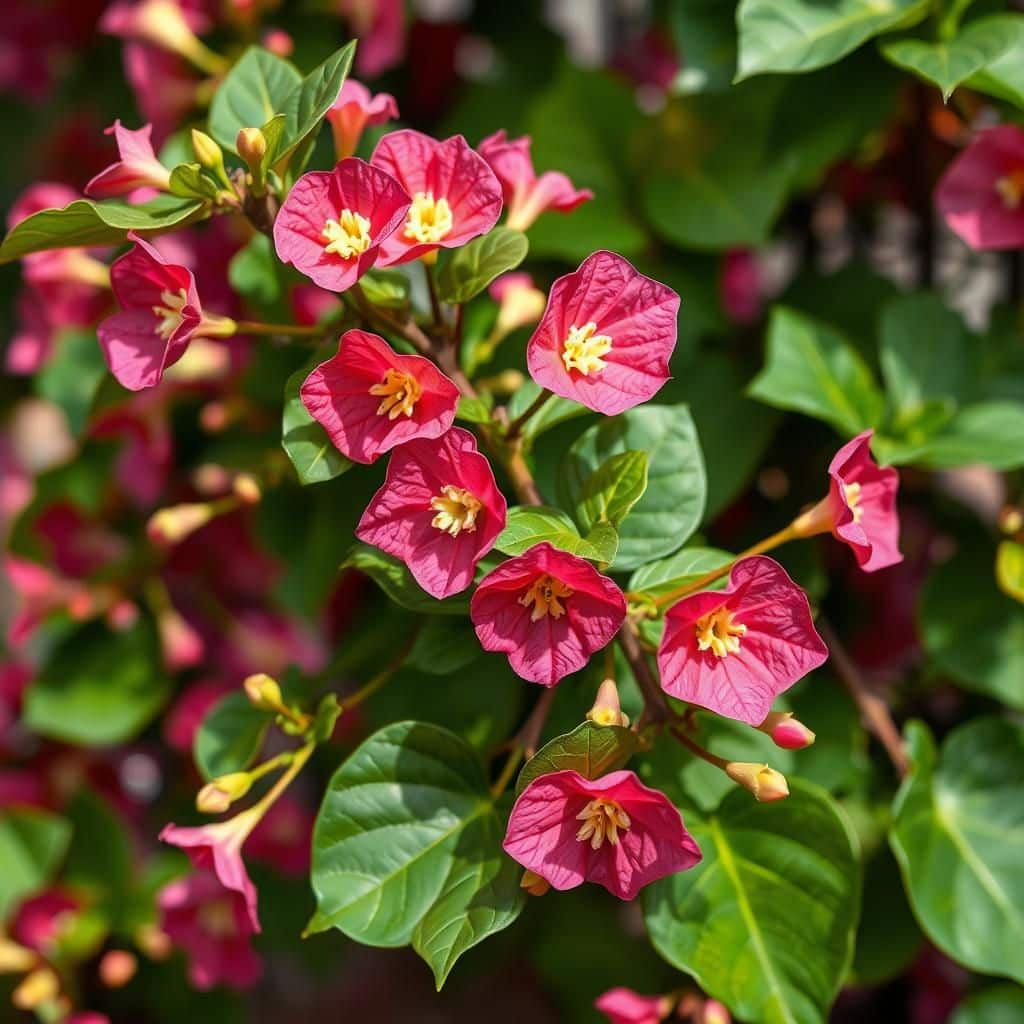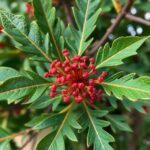Can Bougainvillea Be Propagated? A Complete Guide to Successful Propagation Techniques

Bougainvillea, with its vibrant colors and hardy nature, is a favorite among gardeners seeking to add a tropical flair to their landscapes. Propagating this stunning plant can seem daunting, but with the right techniques, anyone can successfully grow new bougainvillea plants. In this comprehensive guide, we will explore various propagation methods, including cuttings and layering, as well as essential tips to ensure a thriving new plant. Whether you are a seasoned gardener or a novice, understanding the intricacies of bougainvillea propagation will enable you to expand your garden and enjoy the beauty these resilient plants offer.
Can Bougainvillea Be Propagated?
Yes, bougainvillea can be propagated through several methods, including cuttings, layering, and seeds. The most common method is by taking cuttings from the plant, which involves snipping off a healthy stem segment. This cutting should have at least two nodes to ensure successful rooting. After taking the cutting, it can be placed in a well-draining soil mix, kept moist, and positioned in a warm environment to encourage root growth. Layering involves bending a branch to touch the soil while it's still attached to the parent plant, allowing it to root without being cut off. Although less common, seeds can be used as another method, but they often require more time and specific conditions to germinate.
Cuttings Method
Cutting is the most effective and popular way to propagate bougainvillea. To do this, select a healthy stem that is semi-hardwood and cut it to about 6-12 inches in length. Remove the leaves from the lower half of the cutting to prevent rot and promote root development. Dipping the cut end into rooting hormone can enhance root formation. Plant the cutting in a mixture of peat and perlite or any well-draining potting mix, water it lightly, and cover it with a plastic bag to maintain humidity. Place it in a warm, well-lit area but out of direct sunlight until roots begin to form.
Layering Technique
The layering technique is another successful method for propagating bougainvillea. It involves bending a flexible branch down to the soil and covering a portion of it with soil while leaving the tip exposed. This buried section can root naturally. After a few months, once the branch has developed roots, it can be severed from the parent plant and transplanted. This method is especially useful for established plants, allowing for new growth without losing the original specimen.
Seed Propagation
While not as common, propagating bougainvillea from seeds is possible and can result in new plant varieties, although it takes longer than other methods. The seeds should be collected when the flowers fade and the capsules turn brown. After collecting, dry the seeds and plant them in a well-draining soil mix. Seeds require warmth and moisture to germinate, so covering them with a light layer of soil and keeping them in a warm spot will aid in sprouting. However, patience is key, as germination can take several weeks.
See also:
Conditions for Successful Propagation
For effective propagation of bougainvillea, certain conditions must be met. Cuttings and newly rooted plants thrive in bright, indirect sunlight and require consistent moisture without waterlogging. Temperatures between 65°F to 75°F (18°C to 24°C) are ideal for root development. Additionally, ensuring good air circulation around the cuttings can help prevent fungal diseases. Monitoring these conditions creates a suitable environment for healthy growth and increases the likelihood of successful propagation.
Pest and Disease Considerations
When propagating bougainvillea, it’s crucial to be aware of potential pests and diseases that can affect young plants. Aphids, spider mites, and mealybugs may attack cuttings or seedlings, leading to stunted growth. It’s important to regularly inspect the plants and keep the environment clean. If any pests are detected, treating them with insecticidal soap or neem oil can be very effective. Additionally, maintaining dry foliage helps prevent fungal diseases, which can be detrimental to newly propagated plants.
| Propagation Method | Advantages | Timeframe |
|---|---|---|
| Cuttings | Quick and reliable; easy to manage | 2-8 weeks for rooting |
| Layering | Minimal risk of loss; natural method | Several months for rooting |
| Seeds | Potential for new varieties | Up to several weeks for germination |
Understanding Bougainvillea Propagation Methods
Bougainvillea can indeed be propagated through various techniques, ensuring successful growth and establishment. Stem cuttings are one of the most common methods used for propagation, as they allow for easier management and cultivation. When selecting a cutting, it is crucial to choose a healthy stem, preferably taken from a mature plant, and to ensure that it has several nodes. The cuttings should be placed in a well-draining medium and kept moist until they develop roots, typically within a few weeks under optimal conditions. Additionally, using a rooting hormone can significantly enhance the chances of successful root formation.
Stem Cuttings: The Most Effective Method
Stem cuttings are widely recognized as the most effective method for propagating Bougainvillea. To begin the process, select a semi-woody stem from a healthy plant and cut it into segments of about 6 inches in length. Each segment should have at least two to three nodes, as this is where new roots will develop. Plant the cuttings in a moist, well-draining potting mix, and place them in a warm area with indirect sunlight. Providing a humid environment, possibly with a plastic cover, can enhance rooting success. After a few weeks, check for signs of root development before transplanting them into larger pots.
Layering Technique for Bougainvillea
The layering technique is another effective propagation method for Bougainvillea, particularly useful for gardeners who want to increase the number of plants with minimal effort. This method involves burying a portion of a healthy stem while it remains attached to the parent plant. Select a flexible stem, and wound it slightly by making a shallow cut; then, bury the wounded portion in the soil while leaving the tip exposed. Over time, the buried section will develop roots, allowing you to sever it from the parent plant and pot it separately once sufficient roots have formed. This technique leverages the plant's natural tendencies for root formation from stems.
See also:
Using Seeds for Propagation
Propagating Bougainvillea from seeds is another viable option, though it may take longer to achieve flourishing plants compared to cuttings. To start, collect seeds from mature Bougainvillea plants once the flowers have faded and the seed pods have dried. Germinating the seeds involves soaking them in water for a few hours, then planting them in a seed-starting mix. Maintain consistent moisture and provide warmth to encourage sprouting, which may take several weeks. It's important to note that plants grown from seeds might not always display the same characteristics as the parent plant, making this method less predictable.
Best Conditions for Propagation
To achieve successful propagation, it is essential to provide optimal conditions for Bougainvillea plants. They thrive in warm temperatures, ideally between 70°F and 85°F, and require plenty of indirect sunlight to promote healthy growth. In terms of soil, a well-draining, sandy mix is preferred to prevent root rot and ensure proper moisture levels. Additionally, maintaining humidity around the cuttings can encourage faster rooting, so consider using clear plastic coverings or humidity domes in dry climates. Timing propagation during the warmer months can also enhance success rates.
Common Mistakes During Propagation
When attempting to propagate Bougainvillea, several common mistakes can hinder success. One of the primary errors includes using cuttings from unhealthy or diseased plants, which can lead to poor growth and potential disease transmission. Another frequent mistake is overwatering, which can cause root rot; it is crucial to let the soil dry out slightly between waterings. Additionally, failing to provide adequate light can result in weak, leggy growth. Lastly, neglecting to monitor humidity levels can cause cuttings to dry out before establishing roots, so consistent humidity is key to successful propagation.
Questions from Our Readers
Can bougainvillea be propagated from cuttings?
Yes, bougainvillea can be propagated from cuttings. To do this, select healthy stems and cut them into sections about 6 inches long. It's important to remove the lower leaves and use a rooting hormone to encourage rooting before planting the cuttings in well-draining soil.
What is the best time to propagate bougainvillea?
The best time to propagate bougainvillea is during the spring or early summer. This is when the plant is actively growing, which increases the chances of successful root development and overall success of the propagation process.
See also:
Can bougainvillea be propagated through seeds?
Yes, bougainvillea can be propagated through seeds, but this method is less common and takes longer than propagation through cuttings. To propagate using seeds, gather them from ripe flowers and plant them in seedling trays with proper soil, ensuring they receive adequate light and moisture for germination.
How long does it take for bougainvillea cuttings to root?
Typically, it takes about 2 to 4 weeks for bougainvillea cuttings to root, depending on the environmental conditions and care provided. Ensuring warmth, humidity, and consistent watering can help speed up the rooting process.

If you want to read more articles like Can Bougainvillea Be Propagated? A Complete Guide to Successful Propagation Techniques, we recommend you check out our Shrubs category.
Leave a Reply
Related Articles